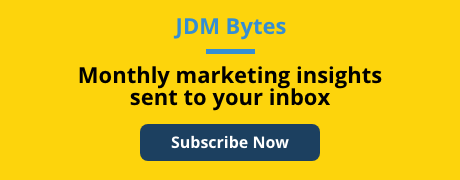Growing AI Search Visibility Phase 3: How to Earn and Increase Inclusion in AI Answers
Google is making a bold move by phasing out Smart Campaigns and rolling out Performance Max, pushing advertisers towards a more sophisticated, AI-driven future. This shift is set to change the Google Ads campaign dynamics for businesses of all sizes, particularly those who have relied on the simplicity of Smart Campaigns to get up and running quickly.
What You’re Gaining—and Losing
Smart Campaigns were the go-to for those who needed an easy, automated setup. They allowed all businesses, especially small and medium-sized businesses (SMBs), to get their ads up and running with minimal effort and technical knowledge. Smart Campaigns offered a degree of control over ad placements, although limited, that suited the needs of local businesses focusing on specific markets. The campaign’s simplicity was its strength, offering a low-barrier entry into the world of Google Ads.
Performance Max, on the other hand, is built to maximize your reach across all of Google’s inventory—Search, Display, YouTube, Discover, Gmail, and Maps. This offers a significant upgrade in terms of potential audience size and engagement, but it comes with a trade-off. Performance Max is fully automated, meaning advertisers will have less control over where and how their ads appear. While this might sound intimidating, it also opens up a new world of possibilities for those ready to embrace the advanced features.
The Impact on Local Businesses
For local businesses, the sunsetting of Smart Campaigns could feel like losing a reliable old friend. These campaigns were particularly effective for industries like healthcare, retail, and professional services, where a straightforward, cost-effective approach was key. Performance Max, while more powerful, requires a deeper understanding of digital marketing strategies, which could be a steep learning curve for smaller teams or less experienced marketers.
The transition will likely push these businesses to either upskill or seek external support to make the most of Performance Max’s capabilities. On the flip side, those who master this new tool will find themselves equipped with a far more versatile and potentially more scalable advertising platform.
What’s Next?
As Google phases out Smart Campaigns, now is the time to start preparing for the shift. Here are some actionable steps:
- Get Acquainted with Performance Max: Dive into Google’s resources and tutorials to understand the ins and outs of this new campaign type. Knowledge is power, especially when navigating a significant transition like this.
- Start Small and Experiment: Don’t wait until Smart Campaigns are entirely gone. Start testing Performance Max with a small portion of your budget to get a feel for its capabilities and performance.
- Leverage Automation Intelligently: While Performance Max is automated, it’s crucial to provide Google’s AI with clear signals. Set specific conversion goals, incorporate offline conversion data from your CRM, and use audience signals to guide the automation in a direction that aligns with your business objectives.
- Take Control Where You Can: Make sure you’re putting guardrails on Performance Max campaigns whenever possible by practicing smart exclusions and segmentations (e.g. retargeting and brand search).
A Cautiously Optimistic Outlook
The transition from Smart Campaigns to Performance Max is significant. For businesses with the resources and willingness to adapt, the potential benefits are enormous—think broader reach, better engagement, and higher ROI. However, it’s not without its challenges, especially for those who appreciated the simplicity and control of Smart Campaigns.
In the end, this change is reflective of Google’s broader strategy: moving towards more AI-driven, automated solutions that can scale and adapt to a rapidly evolving digital landscape. As with any change, the key to success lies in preparation and adaptability. By embracing the advanced features of Performance Max and staying informed about best practices, marketers can turn this transition into an opportunity for growth.
The future of Google Ads is here, and while the road ahead might be complex, it’s also paved with potential. Now’s the time to get ahead of the curve and start planning your transition to Performance Max.
Tags:

Aug 27, 2024 7:30:00 AM



-Dec-04-2025-09-58-32-5416-PM.png?width=500&height=500&name=Regular%20Blog%20Hero%20(1)-Dec-04-2025-09-58-32-5416-PM.png)
